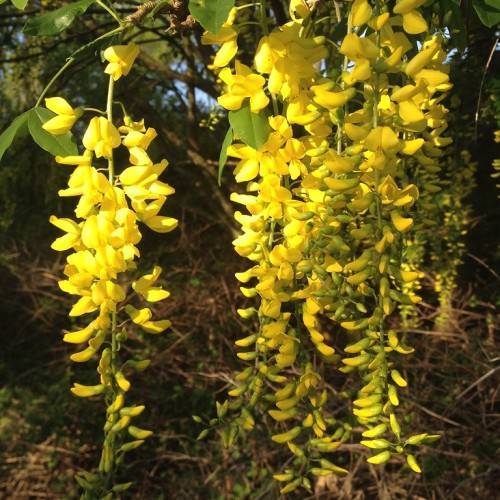
common laburnum
Laburnum anagyroides
Cycle:
Perennial
Watering:
Average
Hardiness Zone:
5 - 7
Flowers:
Flowers
Sun:
Full sun,part shade
Leaf:
Yes
Growth Rate:
Low
Maintenance:
Moderate
Poisonous To Humans:
Yes
Poisonous To Pets:
Yes
Care Level:
Medium
watering
Laburnum anagyroides should be watered thoroughly during the active growth period, from spring to late summer. This species of plant prefers moist soil, so a regular watering schedule should be implemented to keep the soil moist but not soggy. During the growing season, the plant should be watered deeply once a week. It is best to water in the early morning or late evening so that the water will not evaporate in the sun. During the winter months, Laburnum anagyroides should not be watered. Wait until the soil is dry before watering again. In areas of extreme drought, some additional water may be needed. When in doubt, stick to the flexible once-per-week schedule.
sunlight
Common laburnum is a sun-loving plant species that requires at least 6-8 hours of direct sunlight daily for optimal growth and flowering. Its leaves are fragile and will scorch if exposed to too much heat, so avoid full midday sun in hot climates. For shade in hotter climates, a laburnum can be grown under dappled shade of deciduous trees for part of the day. This plant species also benefits from a few hours of direct morning sun to help it get the energy needed to put on a spectacular showing of blooms.
pruning
Prune common laburnums in late winter or early spring for best results. Pruning should take place right after flowering has finished, as this will ensure that all the energy is directed into creating lush, healthy new branches and shoots. Generally, pruning should be limited to removing dead, damaged, or diseased branches, as well as thinning out larger branches or groups of branches that are overcrowded. It’s best to avoid drastic or severe pruning that would significantly reduce the size of the tree, as this could lead to poor growth or health. If larger pruning is necessary, it should happen gradually over a few seasons and only when needed. Always use sharp, sterilized pruning tools to minimize potential damage to the laburnum.
